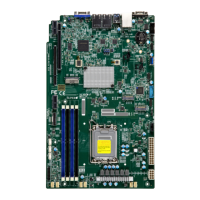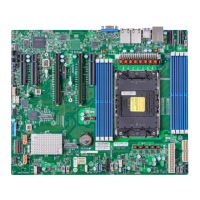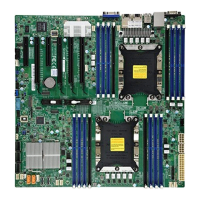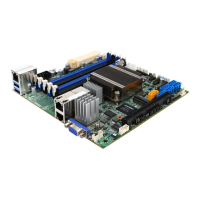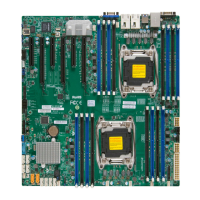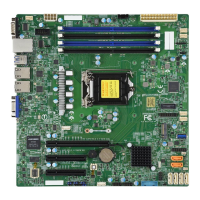Chapter 4: UEFI BIOS
115
Stale AtoS (A to S)
The in-memory directory has three states: I, A, and S states. The I (-invalid) state
indicates that the data is clean and does not exist in the cache of any other sockets. The
A (-snoop All) state indicates that the data may exist in another socket in an exclusive or
in the caches across one or more sockets. When the system is performing "read" on the
memory and if the directory line is in A state, we must snoop all other sockets because
and all the snoops come back with a "miss". This can happen if another socket reads the
line earlier and then has silently dropped it from its cache without modifying it. If "Stale
AtoS" is enabled, a line will transition to the S state when the line in the A state returns
only snoop misses. That way, subsequent reads to the line will encounter it in the S state
and will not have to snoop, saving the latency and snoop bandwidth. Stale "AtoS" may
Disable, Enable, and Auto.
LLC Dead Line Alloc
Enable, and Auto.
UPI3 (Available when your motherboard supports dual processors)
Use this feature to enable/disable the 4th Intel Ultra Path Interconnect (UPI) link. The
default setting is Enable if your motherboard supports UPI3. The options are Disable
Memory Conguration
Enforce DDR Memory Frequency POR
Select POR to enforce Plan of Record (POR) restrictions for DDR memory frequency
and voltage programming. The options are POR and Disable.
Memory Frequency
Use this feature to set the maximum memory frequency for onboard memory modules.
The options are Auto, 3200, 3600, 4000, 4400, 4800, 5200, and 5600. (Please note that
the available options are CPU-dependent.)
Data Scrambling for PMem (Available when any PMem device is detected by the
BIOS)
Select Enable to enable data scrambling for PMem to enhance memory data security.
The options are Disable, Enable, and Auto. Please note that this feature depends on
the support of Intel Optane PMem 300 Series.
Data Scrambling for DDR5
Select Enable to enable data scrambling for DDR5 modules to enhance memory data
security. The options are Disable and Enable.

